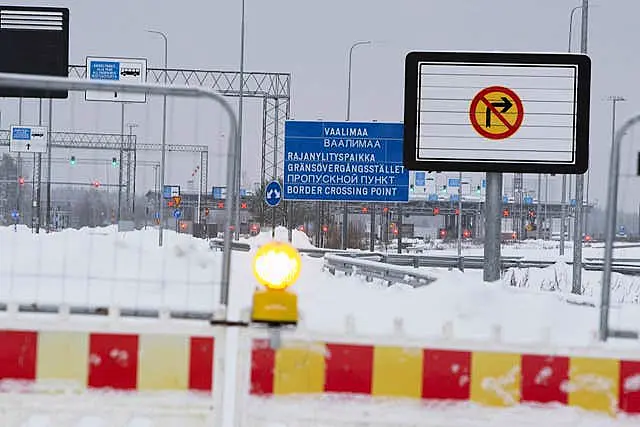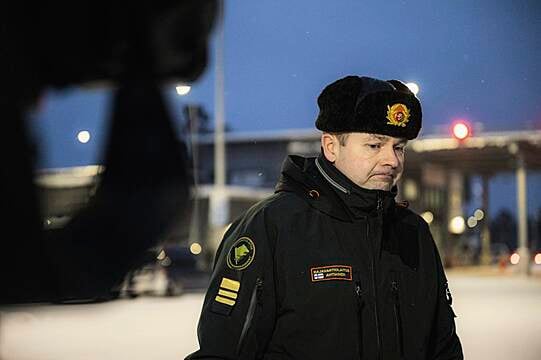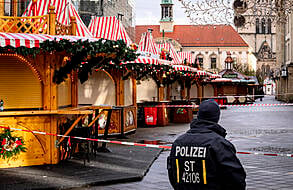Finland closed its final remaining border crossing with Russia on Wednesday after the government decided to seal the entire border with its eastern neighbour amid rising political tensions.
The decision to close the entire 1,340-kilometer (830-mile) border was made by the Cabinet of Prime Minister Petteri Orpo on Tuesday over concerns that Moscow is using migrants to wage “hybrid warfare” to destabilise the Nordic country following its entry into Nato.
The Raja-Jooseppi crossing point in Finland’s Arctic Lapland region, located some 250 kilometres (155 miles) from the northern Russian city of Murmansk, was closed at 2pm on Wednesday, according to the checkpoint’s normal November schedule.

Ville Ahtiainen, a deputy commander with the Finnish Border Guard in Lapland, told reporters that the remote point — located in the middle of the rugged northern wilderness — was quiet during the four hours it remained open Wednesday, with a handful of vehicles passing through on their way to and from Russia. The border cannot be crossed by foot.
No migrants attempted to cross the border to Finland, he said.
Finnish authorities say some 1,000 migrants without visas or valid documentation have arrived at the border since August, with more than 900 in November alone.
Finland makes up a significant part of Nato’s northeastern flank and acts as the European Union’s external border in the north.
The migrants hail from countries including Afghanistan, Eritrea, Ethiopia, Iraq, Pakistan, Somalia, Syria and Yemen, and the vast majority of them have applied for asylum in Finland once they reached the Finnish side of the border, authorities said.
Finland accuses Russia of deliberately ushering migrants to the border zone that is normally heavily controlled by Russia’s Federal Security Service, or FSB, on the Russian side.

The formal closure of Finland’s entire eastern border with Russia takes effect at midnight on Wednesday but, in practice, the Raja-Jooseppi crossing was the only point to remain open after the Finnish government closed seven other crossing points earlier this month.
The situation has escalated tensions between Helsinki and Moscow after decades of pragmatic friendly relations between the neighbouring countries.
Those ties were broken by Finland’s decision to join Nato in May 2022, a direct result of Moscow’s invasion of Ukraine, which started in February 2022.
Finland became Nato’s 31st member in April 2023.
The Kremlin denies Russia is encouraging migrants to enter Finland and says it regrets the Finnish border closures.
Russian Foreign Ministry spokeswoman Maria Zakharova said Finland formally notified Moscow that it has closed the last remaining northernmost border checkpoint.

In a comment earlier this week, Ms Zakharova charged that by closing the border, Finland is hurting its own citizens.
Asked to comment on Nato allies allegedly planning to deploy troops at the Finnish-Russian border, Kremlin spokesman Dmitry Peskov said that “no one and nothing is threatening Finland,” calling the move “excessive”.
At the same time, he warned that “tensions may arise during the concentration of extra troops on our border”.
Mr Peskov said: “We view the concentration of troops on our border as absolutely unprovoked and unfounded.
“The Finns need to be clearly aware that a troop build-up on our border will pose a threat to us.”

There are currently no Nato soldiers permanently stationed on the Finnish territory or along the Russian border apart from foreign troops taking part in the military alliance’s regular exercises with the Finnish military.
Some experts cited by Finnish media believe Mr Peskov referred to the EU’s border agency Frontex, which has dispatched staff and equipment to assist the Finnish border officials in patrolling and monitoring the country’s lengthy eastern border.
The complete Finland-Russia border closure is due to last for at least two weeks until December 13, after which one crossing point may be reopened, the Finnish government said.
A rail crossing between the two countries remains open but only for cargo traffic.







